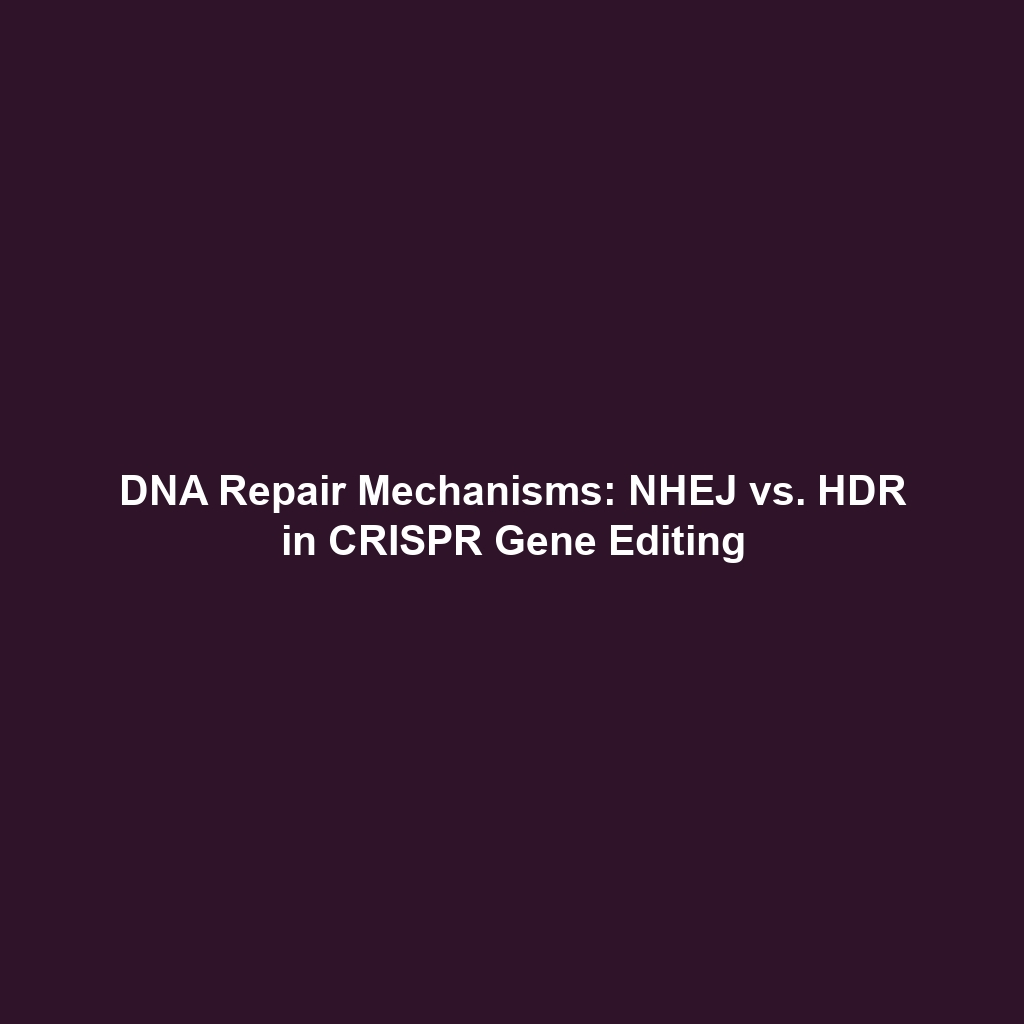The Repair Process After DNA Is Cut: NHEJ vs. HDR
Introduction
The repair mechanisms that follow DNA cutting are essential in the context of CRISPR gene editing. The two primary pathways for repairing double-strand breaks (DSBs) are Non-homologous end joining (NHEJ) and homology-directed repair (HDR). Understanding these processes is vital for improving the precision and efficacy of genetic modifications. This article delves into the significance of NHEJ and HDR, highlighting their roles in CRISPR technology and their broader implications in genetics.
Key Concepts
Understanding Non-homologous End Joining (NHEJ)
NHEJ is a quick repair mechanism that ligates the broken ends of DNA together without the need for a homologous template. This process is predominant in most organisms and operates primarily in the G1 phase of the cell cycle. NHEJ is characterized by:
- Rapid ligation of DNA ends.
- Potential for insertion or deletion mutations (indels).
- A high degree of error, impacting genomic stability.
Exploring Homology-Directed Repair (HDR)
In contrast, HDR is a more accurate repair process that utilizes a homologous template to ensure precise restoration of the DNA sequence. This mechanism is most active during the S and G2 phases of the cell cycle. Key features of HDR include:
- High fidelity in repairing DNA sequences.
- Utilization of donor templates, such as plasmids or sister chromatids.
- Suitability for precise gene editing in CRISPR applications.
Applications and Real-World Uses
Both NHEJ and HDR have significant applications in CRISPR gene editing. Their utility extends across various fields, including:
- Medicine: Targeted therapies for genetic disorders through precise editing.
- Agriculture: Develop crops with desirable traits using CRISPR technology.
- Biodiversity conservation: Gene editing for species preservation efforts.
Understanding how NHEJ and HDR are utilized in these contexts enhances our grasp of DNA repair mechanisms in CRISPR applications.
Current Challenges
Despite their promise, studying and applying NHEJ and HDR involves several challenges, including:
- Limited efficiency of HDR in certain cell types.
- High likelihood of mutations with NHEJ.
- Difficulty in targeting specific genomic locations precisely.
Addressing these issues is critical for advancing the efficacy of CRISPR technologies.
Future Research and Innovations
Ongoing research is focused on overcoming the limitations of NHEJ and HDR, with innovations such as:
- Development of next-gen CRISPR-Cas systems for enhanced precision.
- Techniques to increase HDR efficiency in non-dividing cells.
- Exploration of synthetic templates that improve repair accuracy.
These advancements hold the potential to transform CRISPR gene editing, paving the way for more reliable genetic interventions.
Conclusion
In summary, the repair processes following DNA cuts—NHEJ and HDR—are crucial in the field of CRISPR gene editing. While NHEJ offers a rapid but error-prone repair method, HDR provides a more precise solution. Understanding these processes not only enhances our capability in genetic engineering but also informs future innovations in the realm of CRISPR technologies. For further reading, explore our articles on advances in CRISPR technology and gene editing techniques.
